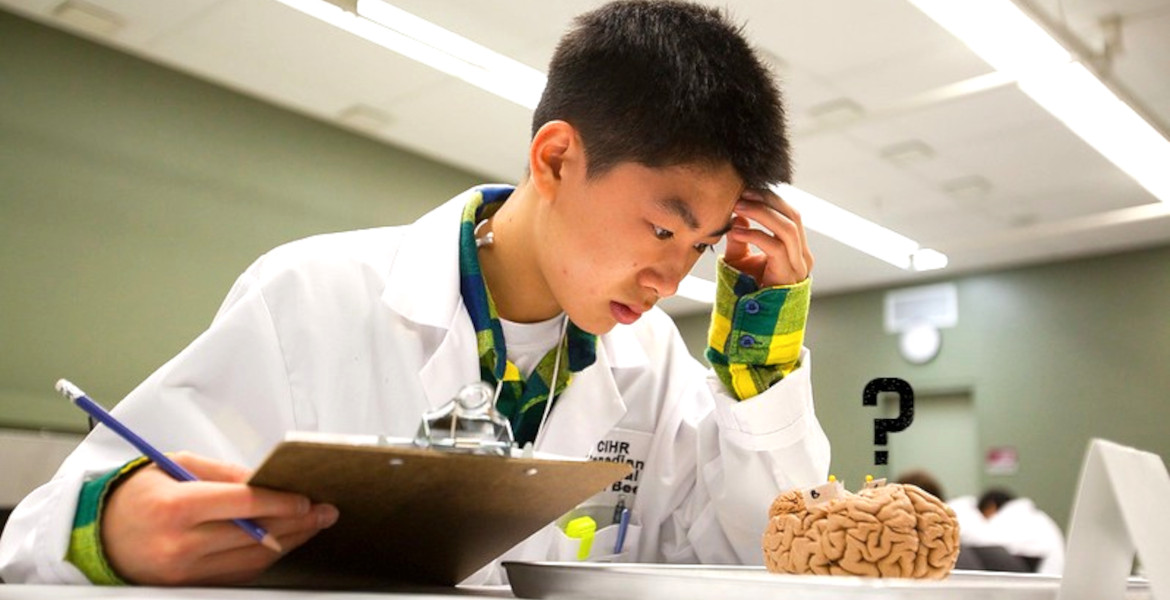DEXTER – Excuse me, but could I ask you a few questions about your thoughts on human consciousness?
SINISTER – Sure, but who are you to jump on people about such issues? Are you a journalist or something?
DEXTER – No, my voice comes from a place in your brain. And we’re neighbors, right? I mean we’re in opposite hemispheres.
SINISTER – Yes, I thought I recognized the tone. What’s on your mind, or should I say brain?
DEXTER – Well, I’ve been thinking a lot about this consciousness thing … I was going to write an essay on the subject but I’d need to know a bit more about what people think and feel about it. But first I need to know how I see it myself. Let’s have a discussion, two hemispheres of the brain, and see how far we can get.
SINISTER – I understand, but it’s a very difficult question to get to the bottom of. And even harder to know if we are getting closer to the truth. But let’s try anyway.
DEXTER – My first question is: What is consciousness?
SINISTER – Thank you for asking that very question. You start with a straight right, I see. You might as well have asked, what is life? Well, you could say that consciousness is the window through which we look into life and can experience both what is around us, but also what is going on within us. It seems to be present in all higher living beings and I guess it is localized to the brain.
DEXTER – Good analogy with the window, it can be ajar in different ways, so to speak. But you mustn’t conclude that it’s only vision that’s involved. Consciousness includes all sensory impressions, as well as body movements and speech, emotions and thinking. Moreover, consciousness can be both subjective and objective. Why do you think consciousness is in the brain?
SINISTER – Ha ha, where else would it be? And where would we be? Are we not in the brain, so to speak? You say yourself that consciousness includes all the functions of the brain.
DEXTER – No, I haven’t said that. There are areas that waking consciousness does not reach. For example, the subconscious and the superconscious. We quickly forget what we experienced in the dream and also what we experienced yesterday or the day before. It often withdraws from waking consciousness and sinks into the subcon-scious. Conversely, consciousness is not limited to the brain. We are aware of our body, sometimes also of what we do, what we say and even of the world around us.
SINISTER – Yes, that’s true, but we only know what’s outside the brain through our sensory impressions, and they accumulate in the brain.
You know that scientists can photograph areas of the brain where there is conscious activity, with different cameras, MRI and PET cameras and all that. And they’ve linked different areas of the brain to different functions by studying patients with lesions in different parts of the brain, so why wouldn’t they be able to find an area that’s responsible for consciousness?
DEXTER – Yes, but if this area has been damaged, how do you know that it is consciousness that is affected and not the function of the damaged area?
SINISTER – I’ll pass on that question.
DEXTER – Using these imaging techniques to find consciousness is a bit like looking for your keys under the streetlight where it’s bright, even though you don’t know where you’ve lost them.
SINISTER – Where else would you look for consciousness? Science can only search for something it can measure. We can only measure what our instruments can register, and it’s reasonable to look for consciousness where we know that conscious activity is going on.
DEXTER – But consciousness itself is not measurable as I understand it. Only the electrical activity and the secondary transmitters in the brain, i.e. the signals between the neurons, can be measured, as well as the blood flow and the metabolic processes. That is, the physical phenomena. We do not even know what consciousness is. How can we know what instruments we need to measure it?
SINISTER – No, I didn’t say it was easy. But a new discovery is not always preceded by knowledge of the conditions for its discovery. The discovery can be a happy accident. If we stopped seeking the answers to the big questions because we didn’t know the conditions, we would lose the help fate can give us in our efforts to find the right one.
DEXTER – Yes, I must admit that this is precisely what probably drives many scientists through the catacombs of frustration. But, are we likely to be able to measure subjective experiences, feelings and thoughts, those experiences that consist of the joy of hearing the leaves rustle in the wind or the beauty of the painting and the feeling for different shades of red?
SINISTER – Now you are really testing me. We may never be able to measure such subjective experiences but I think we could find the neural structure that creates consciousness.
DEXTER – What do you mean? How could we be sure that if we can’t measure consciousness itself, that consciousness has actually arisen in this brain structure and that it’s not just joining the brain at this location? Much like the radio waves connect to the radio set through a receiver that converts radio waves into alternating currents which in turn are converted by the speaker into sound waves that we can interpret and understand.
SINISTER – In that case, the body would be separate from consciousness as the old Cartesian dualism claimed, “body and soul” are separate, but then we also leave what science can do. Science can only speak about the measurable and what is the physical world. The question can be discussed, of course, but then you have to call the philosophers.
DEXTER – Does that mean you believe that consciousness is a byproduct of brain activity?
SINISTER – Yes, it must be, the problem is that we can’t yet prove it.
DEXTER – It seems unlikely that consciousness could arise from the combination of unconscious matter, or that the complexity of the composition of the parts would generate consciousness. The largest supercomputers are extremely complex and can perform a hundred trillion calculations per second, but they don’t even have any kind of life, much less any intelligence, other than that with which they are programmed, and they don’t have a shred of consciousness.
SINISTER – Well, we may not get very far with these questions. We know too little even though we use both hemispheres of the brain. Could it be that we are part of the problem? It’s hard to analyze what you are. What remains is to ring the poets’ doorbell and see what they have to say;
In the neuron’s dendrites and threads,
signals give life its light.
Are these currents in our heads,
what gives rise to consciousness´s height?
Or are they but mere crutches,
pieces of our journey’s code,
when science its limits touches
to reach an unknown abode?
What is it that notes each thing,
that wills, that feels, understands,
that delights in what life can bring,
and with awareness still expands?
A guest with our brain aligned,
briefly dwelling in our sphere,
takes part in life of the everyday kind,
then, suddenly, is not here.
Is it just a physical spectacle,
a brain phantom, a projection grand,
matter´s complex miracle,
or a new dimension´s land?
Will humanity ever learn,
where the key to knowledge lies?
One must seek what one can discern,
and when the time is right and wise.
Peter Wersäll
Background to the article
Research on human consciousness, which only really took off in the 1980s, is struggling to define what consciousness is. It has even more difficulty answering the question of whether consciousness arises in the brain as a result of complex neurophysiological processes or whether consciousness can exist independently of the brain. Research on consciousness has given rise to numerous theories with more or less unbelievable explanations, but decades of experiments have failed to establish anything about the main issue.








